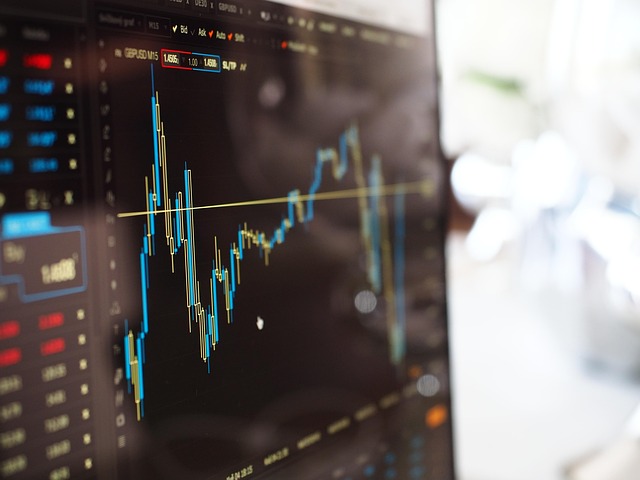EEX Exchange Fees in 2025: A Comprehensive Guide for Traders and Investors
Author: Jameson Richman Expert
Published On: 2025-10-07
Prepared by Jameson Richman and our team of experts with over a decade of experience in cryptocurrency and digital asset analysis. Learn more about us.
Navigating the European energy trading landscape in 2025 demands a nuanced understanding of the European Energy Exchange (EEX) fee architecture. As the energy markets undergo profound transformation driven by accelerated regulation, technological innovation, and a strategic pivot toward sustainability, traders and investors must master the intricacies of EEX’s comprehensive fee structures. Deep insights into these components enable market participants to optimize profit margins, implement cost-efficient trading strategies, and sustain a competitive edge within Europe’s integrated and evolving energy markets. This authoritative guide provides an in-depth analysis of EEX’s fee components, compares it with global counterparts, explores emerging market-driven trends, and offers strategic recommendations for minimizing costs in 2025 and beyond.

Introduction to EEX Exchange Fees
The European Energy Exchange (EEX) functions as a pivotal marketplace for energy commodities across Europe, offering transparent, regulated markets for electricity, natural gas, carbon emission allowances, and derivatives. To sustain operational excellence, comply with stringent regulatory standards, and foster liquidity, EEX employs a sophisticated, dynamically adjusted fee framework as of 2025. A comprehensive understanding of these fee elements is essential for traders and investors aiming to maximize margins, develop effective trading tactics, and operate efficiently in a complex, compliance-driven environment. Mastering fee structures also allows for strategic planning amid regulatory shifts and technological advancements shaping the European energy sector.
Dissecting the EEX Fee Structure: Components and Strategic Implications
The cost management strategy in energy trading hinges on a detailed comprehension of EEX’s fee components. In 2025, these comprise the following core elements:
- Transaction (Trading) Fees: These fees are charged per executed contract and vary according to product type (e.g., day-ahead, intraday, futures), trading volume, and membership status. EEX employs a tiered pricing model designed to incentivize higher trading volumes; surpassing certain thresholds often results in significant discounts—up to 30-50%. Such incentives foster increased market liquidity, reduce per-trade costs, and heighten profitability for high-volume traders. Strategic volume growth thus becomes a key cost reduction tactic for active participants.
- Clearing and Settlement Fees: Managed via EEX’s clearing entities such as EEX Clearing GmbH, these fees cover risk mitigation, collateral management, and settlement infrastructure. In 2025, heightened market volatility coupled with stricter European regulatory regimes like EMIR (European Market Infrastructure Regulation) may lead to elevated risk premiums embedded within these charges. Longer-dated derivatives and higher-risk products typically attract higher clearing fees, emphasizing the importance of risk profile management and product selection to optimize costs.
- Membership and Access Fees: Entry into the EEX platform involves initial onboarding costs and annual membership dues. Membership status confers benefits such as discounted transaction fees, extensive market data access, premium trading tools, and prioritized connectivity. The onboarding process necessitates rigorous compliance checks, financial vetting, and adherence to AML standards, ensuring a secure, compliant marketplace. For high-frequency and institutional traders, the initial investment in membership often results in substantial long-term savings through lower transaction costs.
- Market Data and Infrastructure Costs: EEX offers a broad spectrum of data services—real-time feeds, historical datasets, API integration, advanced analytics—which are increasingly vital in a data-driven trading environment. Institutional and algorithmic traders often procure premium data packages, which in 2025 can constitute a significant portion of total trading expenses. Investing in high-quality data access becomes a strategic necessity for enhanced decision-making and operational efficiency.
Global Comparison: EEX Versus International Energy and Commodity Platforms
While EEX remains a dominant force within European markets, examining fee structures of leading international platforms reveals opportunities for strategic cost minimization:
- CME Group (Chicago Mercantile Exchange): As a global derivatives giant, CME maintains a multi-layered fee structure that includes transaction fees, clearing charges, and membership dues. Its tiered volume discounts—up to 50%—encourage high-frequency trading and market depth. CME also offers specialized fee reductions for block trades and complex derivatives, attracting institutional players seeking liquidity and cost efficiency.
- ICE (Intercontinental Exchange): ICE emphasizes flexible membership options, volume-based discounts, and premium data services. Its fee models support diverse trading strategies across energy, commodities, and environmental products, adjusting dynamically to trading activity levels and service bundles—allowing tailored, cost-effective trading solutions.
- Nord Pool: Specializing in Nordic power markets, Nord Pool offers notably low transaction fees, focusing on regional integration and small contract sizes. Its fee structure fosters continuous trading and short-term market participation, making it attractive for retail traders and smaller institutional investors seeking low-cost, high-accessibility market entry.
Drawing parallels with digital asset exchanges such as Binance, MEXC, Bitget, and Bybit illuminates shared principles—tiered fees, referral bonuses, promotional incentives—that are increasingly relevant in energy markets. High trading volumes and active memberships remain universally rewarded, illustrating the strategic importance of volume accumulation and participant engagement.

Market Trends and Regulatory Influences Impacting EEX Fees in 2025
The fee landscape in 2025 is shaped by several transformative market and regulatory trends:
- EU Green Transition and Sustainability Incentives: The EU’s aggressive decarbonization policies and renewable deployment targets are influencing EEX fee policies. Expect to see preferential or reduced fees for green energy transactions, renewable certificates, and climate-neutral products, aligning with EU’s Green Deal and Fit for 55 legislation. Such measures incentivize sustainable trading practices and support market-driven decarbonization goals.
- Enhanced Transparency and Regulatory Compliance: Tighter surveillance, anti-manipulation measures, and comprehensive compliance standards—like updates to MiFID II/MiFIR—are increasing operational costs. These may manifest as new surcharges or compliance-related fees. Traders must incorporate these costs into their strategic planning to ensure regulatory adherence without eroding margins.
- Technological Disruption and Digital Innovation: Blockchain, AI, and machine learning are revolutionizing settlement, clearing, and data analytics, promising to reduce operational costs and enable real-time, dynamic fee adjustments. These innovations facilitate more transparent, efficient, and adaptive fee models aligned with market conditions and trader activity.
- Competitive Market Landscape and Service Innovation: The proliferation of new European and international exchanges, along with fintech-driven service offerings, fosters fee competition. Fee bundling, flexible payment solutions, and customized service packages are becoming prevalent, offering traders a broader array of cost-saving options in 2025.
Strategic Approaches to Minimize EEX Fees in 2025
- Scale Trading Volumes Strategically: Leverage tiered pricing incentives by increasing trading activity to surpass volume thresholds, unlocking discounts that can reach 50%, thereby significantly improving profit margins over time.
- Secure Membership Benefits: Evaluate the long-term gains from becoming a registered EEX member. Membership lowers transaction costs, grants access to exclusive data and tools, and provides priority trading support—valuable for high-frequency and institutional traders. The initial investment often yields substantial cumulative savings.
- Engage with Incentive Programs: Stay alert to promotional offerings, referral bonuses, and limited-time discounts from EEX and affiliated platforms. Active participation in such programs can reduce costs and diversify trading options.
- Adopt Advanced Trading Technologies: Utilize algorithmic trading, intelligent order routing, and risk management tools to streamline trade execution, minimize unnecessary transactions, and control fee exposure effectively.
- Stay Informed on Fee Policy Updates: Regularly monitor official communications, regulatory changes, and market news. Timely adaptation ensures proactive cost management and strategic positioning against fee changes.
Future Outlook: EEX Fee Dynamics and Market Evolution in 2025 and Beyond
The evolution of EEX’s fee structure will be shaped by several key factors:
- Accelerated Green Transition: As renewable energy gains dominance, expect the introduction of reduced or tiered fees for green transactions, certificates, and climate-friendly products—supporting the EU’s climate commitments and promoting sustainable trading behavior.
- Blockchain and Smart Contracts: These technologies hold promise for dramatically lowering settlement and clearing costs, leading to reduced transaction fees, enhanced transparency, and real-time processing capabilities.
- Dynamic and Data-Driven Fee Models: Future fee structures may become more flexible, adjusting in real-time based on liquidity, volatility, and trader activity—allowing for personalized, cost-efficient trading experiences.
- Market Competition and Innovation Surge: The influx of new digital exchanges and innovative service bundles will likely drive down costs and expand value-added offerings, benefiting traders through greater choice and lower fees.
Remaining adaptable, leveraging technological innovations, and staying abreast of regulatory developments will be crucial for traders seeking to optimize costs and maximize profitability amidst an increasingly competitive and innovative energy trading environment.

Conclusion
A thorough understanding of EEX’s fee structure in 2025 is fundamental for traders and investors aiming for cost efficiency and enhanced profitability. Dissecting fee components, benchmarking against international platforms, and deploying strategic cost-reduction measures empower participants to navigate the complex regulatory and technological landscape confidently. As policies tighten and innovations accelerate, agility and continuous learning will be vital to maintaining a competitive edge. Exploring cost-effective trading options, such as leveraging platforms like Binance, MEXC, Bitget, and Bybit can further enhance trading efficiency and reduce costs, positioning traders to succeed in the dynamic and increasingly competitive European energy market in 2025 and beyond.